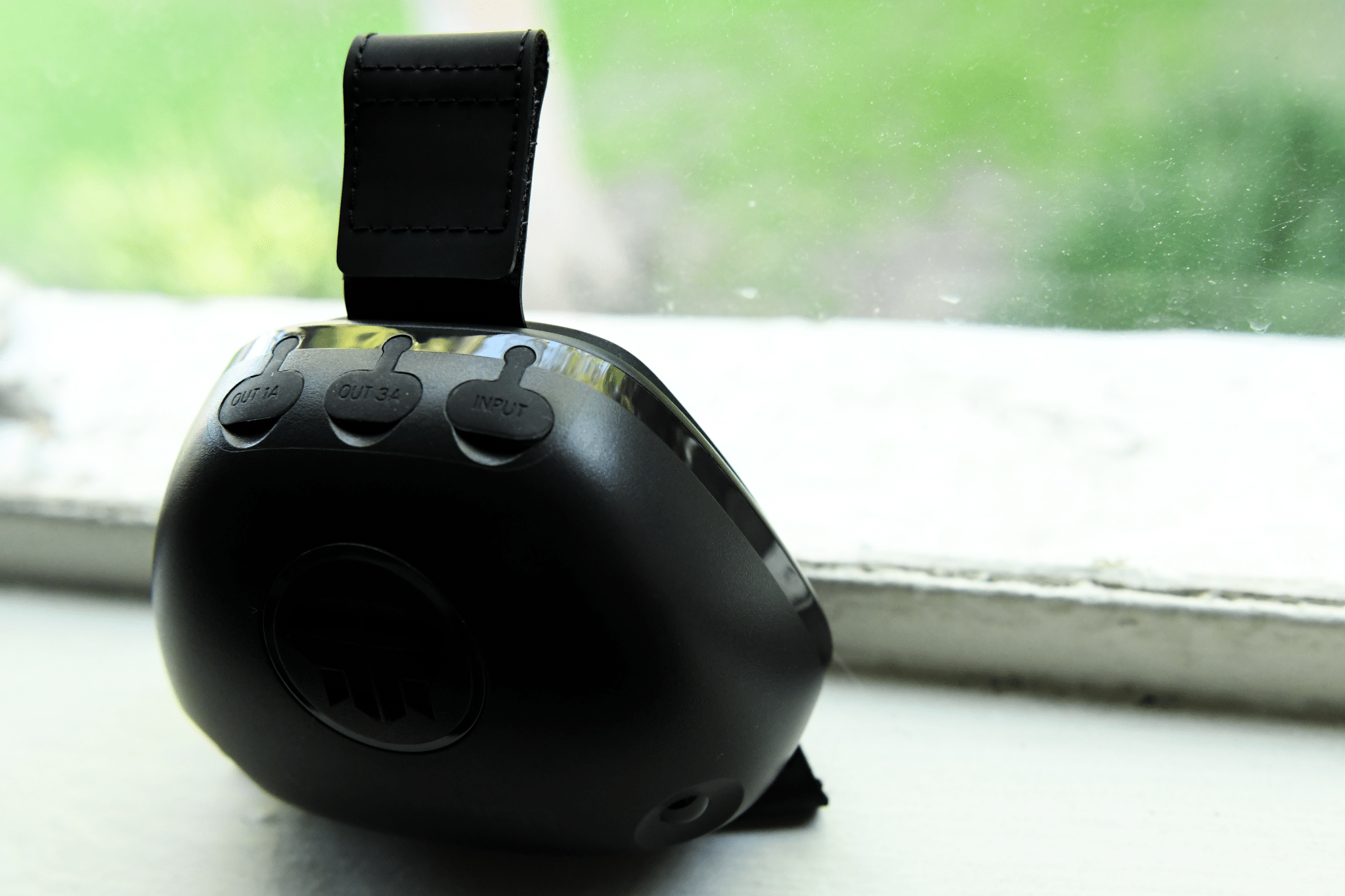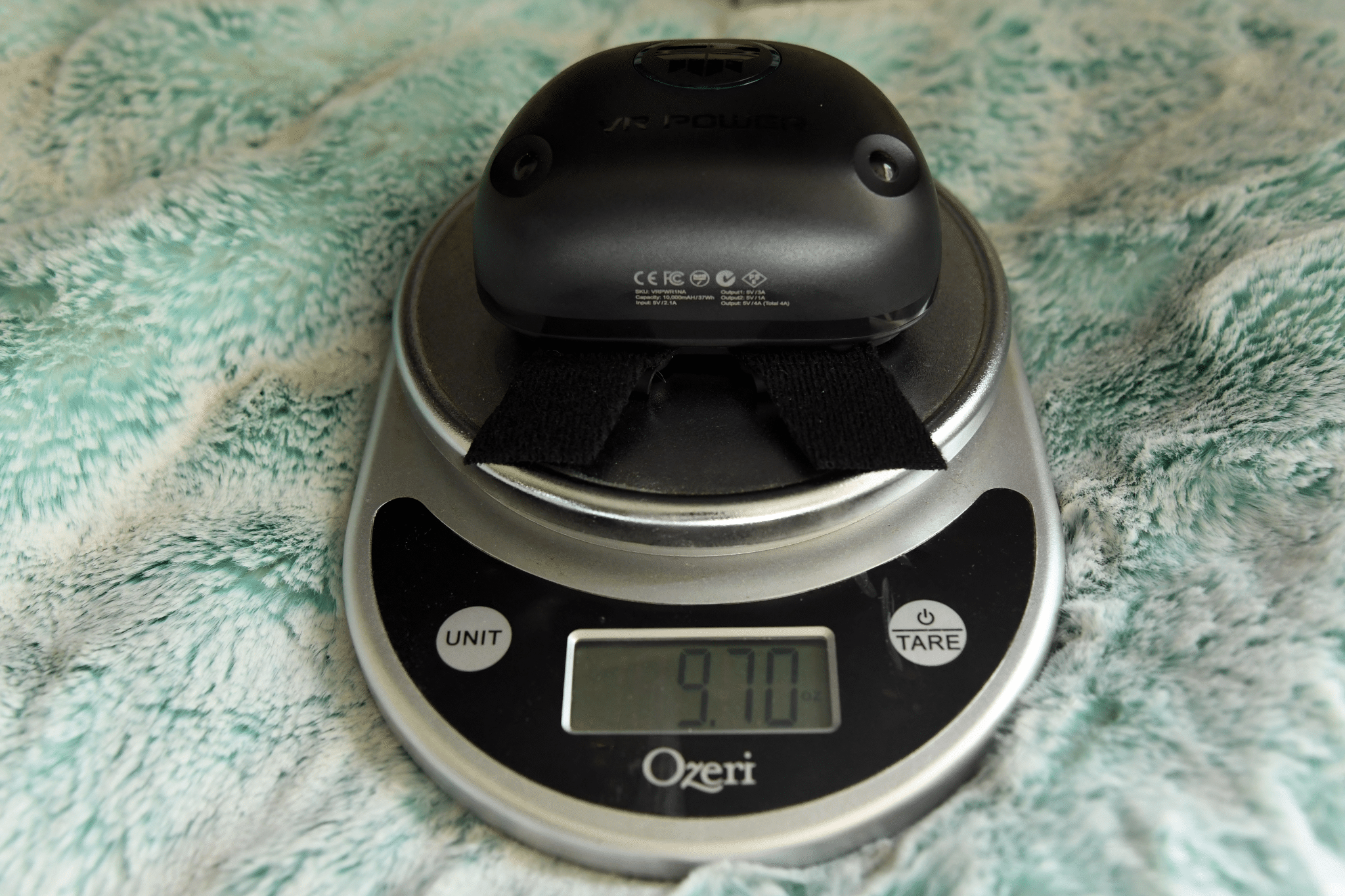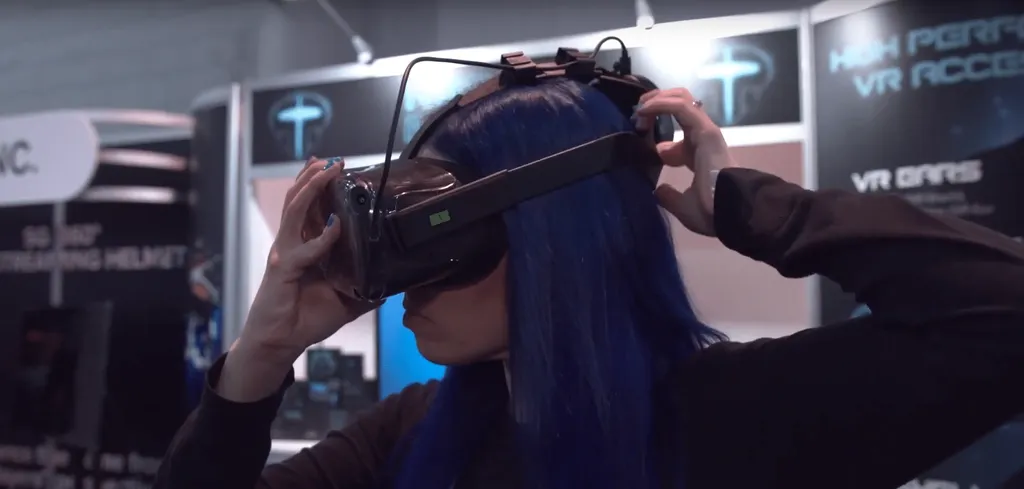Twenty minutes.
That’s the longest I’ve ever been able to wear an Oculus Quest before ripping it off my head in pain. If I’m being honest, I hated using my Quest because it was so uncomfortable. It sat next to my bed for months, the controllers and charger tucked away on my headboard shelf. But while I hated the Quest, I did appreciate and love the concept of what it was, and what it meant for VR.
[When you purchase items through links on our site, we may earn an affiliate commission from those sales.]
The VR Power is a 10,000mAh battery that weighs 9.7 ounces (roughly 0.61 pounds), providing not only a better battery life, but also acting as a counterweight for the Oculus Quest. Some people have concerns that the battery will “overheat and explode” or “break your neck,” but after extensive testing, I can confirm that never happened. If anything, the VR Power makes the Quest feel like a more appropriate weight, as it doesn’t allow the headset to tip forward on your face.
VR Power: What’s In The Box
The box comes with the battery pack, two cable management clips, and a short USB-C to USB-C cable to connect from the VR Power to the USB-C port on the side of the Quest. The cable management clips are attached with velcro-style fasteners; they fit and fasten perfectly, so there’s no need to worry about it getting caught on your hair. Getting the USB-C cable into the clips requires a bit of force, but once they’re in place, it fits securely. The straps that fasten the VR Power to the bottom of the head strap are also perfectly measured, and never irritated the back of the head, or got caught on my hair.
VR Power’s power button in the center also acts as a battery indicator. Going counterclockwise, quadrants will turn off to signify a loss in 25% of battery life per quadrant respectively. It has three USB-C ports on the top: from left to right, a 1 Amp port that can be used to charge other accessories, a 3 Amp port to charge the Quest, and the charging port for the VR Power itself. By having the shorter cable hooked up in the middle port, you can use your Oculus Quest charger in the far right port to charge both at the same time.The battery pack was delivered with about 75% charge, and my Quest was completely dead, so I charged them overnight before conducting the review.
Nine hours, twenty one minutes, and thirty six seconds.
That’s how long I spent in an Oculus Quest in a single day. I know it was exactly this long because I used multiple timers to record my exact play time. Over nine hours is a long time. Most people don’t even get to sleep for that long. You could fly from London to Boston and still have time to spare. You could watch The Hateful Eight three times. But with a fully charged VR Power and Oculus Quest, I was able to enjoy that much time in virtual reality.

Testing The Battery
I made sure to test it for that long because Rebuff Reality claimed that the VR Power would give users up to eight hours of gaming, and up to ten hours of streaming (if using a fully-charged Quest).
Disclaimer: We do not advise anyone to be in VR for extended periods of time. Moderation is key, as-is taking breaks regularly. If you begin to feel sick in VR, remove the headset and take a break. For more information on how to overcome VR motion sickness, click here.
To test the lofty battery life claims, I decided to do a mixture of both VR gaming and video streaming. I started off with playing A Fisherman’s Tale, which took me roughly three and a half hours. After that, I watched a few episodes of Arrested Development on Netflix, and then dragged our News Writer, Harry Baker, into the experiment for some help. Around the seven hour mark of my testing, Harry set up a custom room in Bigscreen, where we looked through his Spotify playlists via Virtual Desktop, and played a few rounds of Pictionary using Bigscreen’s 3D drawing tool.
After saying goodbye to Harry and being grateful for the brief interaction with another human, I fired up I Expect You To Die. I tried to close out the test with Gun Club VR, but I was so exhausted at that point, I went back to Netflix after 20 minutes.
Analyzing The Effects
While I started to fade mentally from being in VR for that long, I wasn’t in a lot of physical pain. Roughly at the five hour mark was when my forehead started to hurt on one side. I had to readjust the straps a couple times, but was able to get back to it without issue. At the end of the nine and a half hour test, I had a very small headache. Dismissible, even. It went away within half an hour.
For those of you who have the same issues I did with the Oculus Quest (the headset being incredibly front heavy, pinching the nose, squishing the face), the VR Power does a fantastic job of evenly distributing the weight. If anything, I felt my Oculus Quest was lighter. I never felt like it wasn’t secure, either. I stress-tested the stability by skipping around outside, jumping, headbanging, and running. Not once did it feel like it was going to fly off, or have the straps come undone.
To test out how it held up during high motion activity, I played a handful of OhShape rounds. If you’re unfamiliar with OhShape, it’s a fusion of Beat Saber and Tetris (but with your body instead of blocks). I was surprised at how much of a workout it actually was! The game has you lifting your arms, doing squats, moving from side to side, punching, and catching objects. It may seem like an easy concept, but the way the game has you move your body really uses your body’s weight for a good workout. You can check out our full review here.

The main issue with the Oculus Quest for me is that the headstrap does not sit low enough on the back of my head. While the VR Power doesn’t drastically fix this, it keeps the headset in place, and the weight is perfect for lifting the pressure off my face. I was a bit worried that playing OhShape would call for me having to adjust the headset several times, but it stayed securely in place. It didn’t slide from side to side, or scoot up on my head. I know I need to be more active and do some exercising. Now that I’ve tried OhShape with the VR Power, I’m actually motivated to do so.
While it’s understandable to assume having a battery pack attached to the back of your skull is going to cause some temperature issues, the VR Power never seemed to get hot. Using it for nearly nine and a half hours straight, I didn’t feel I was in any danger of it exploding, and I never felt its temperature rise. After entirely depleting the battery, I timed the total charge time to full, which is indicated by a solid, lit up circle around the power button.
The charge was rather slow, clocking in at about six hours and five minutes using the Oculus Quest power adapter and charge cable. This may seem frustrating for some, and it was for me at first, but I suspect it charges slow for a specific reason. Although this is just a theory (and I’ve only done a single complete 0% to 100% charge), I feel it charges slow to not build up any unnecessary heat, and preserve the overall life of the battery. Realistically, I’m not sure how many times users would fully deplete to the degree I did for the review and do a complete charge.
VR Power Review: Final Verdict



 4/5 Stars | Really Good
4/5 Stars | Really Good
The only downside we could find with the VR Power is that it isn’t compatible with Oculus Link. When I asked Rebuff Reality about this, they let me know that, “VR Power is optimized based on Oculus Link charging specifications, however, it is not able to pass through data from your computer to the Oculus Quest.” This means that you can’t use the VR Power as a battery device while you’re using Oculus Link, but you can still keep it attached to use as a counterweight for comfort.
The battery life claims made by Rebuff Reality are true, it’s easy to install, and it makes the Oculus Quest not only wearable for me, but actually comfortable. For people who want more battery life out of the Quest, or want more comfort for long hours of playing and developing, the VR Power is easily one of the best Oculus Quest accessories on the market.
The VR Power is available from Rebuff Reality for $60.
This review was conducted with a VR Power unit provided by Rebuff Reality. For more information about how we arrived at this score, check out our review guidelines.






























